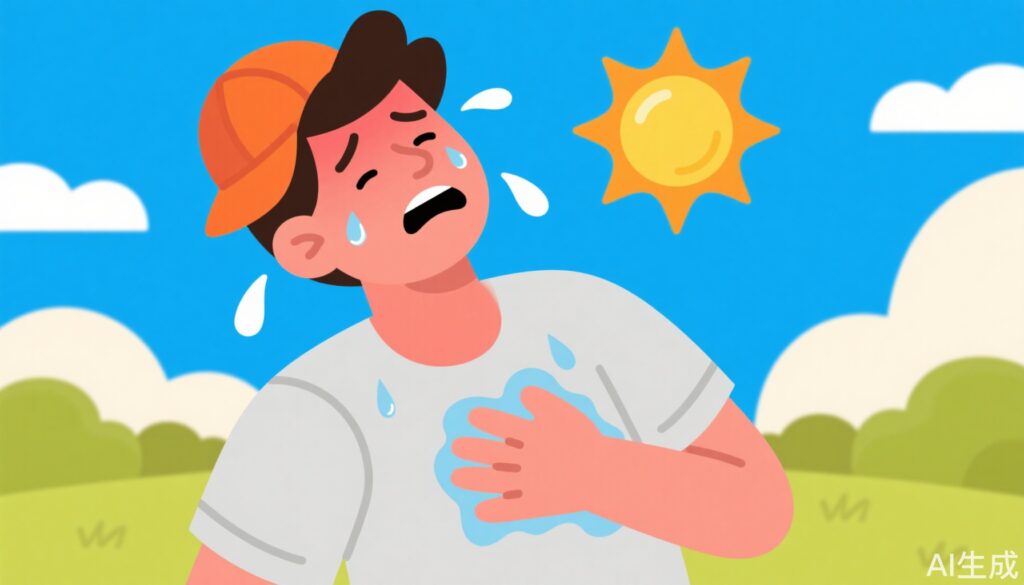What Causes Heat Stroke?
Heat stroke is a severe heat-related illness caused by prolonged exposure to high temperatures, leading to the body’s inability to effectively regulate its core temperature. It arises when the body’s heat production exceeds its capacity to dissipate heat, resulting in dangerously elevated body temperature. Several factors contribute to the onset of heat stroke:
1. High-Temperature Environments: Exposure to hot weather conditions, such as during summer heat waves, working in high-temperature settings, or staying in poorly ventilated, enclosed spaces, increases the body’s heat load and raises core temperature.
2. High Humidity: Humid conditions hinder sweat evaporation, the body’s primary cooling mechanism, making it difficult to dissipate heat effectively.
3. Excessive Physical Activity: Intense exercise or heavy labor generates additional internal heat. Combined with hot and humid environments, this elevates the risk of heat stroke.
4. Inadequate Hydration: The body loses water and electrolytes through sweating to cool down. Without timely and sufficient fluid and electrolyte replacement, dehydration ensues, impairing thermoregulation and increasing heat stroke risk.
5. Obesity: Excess body fat can act as insulation, reducing heat dissipation and making it harder for the body to cool down.
Preventing heat stroke primarily involves minimizing exposure to hot environments, especially during peak heat hours. Protective measures include wearing lightweight, breathable clothing, avoiding strenuous activity during the hottest parts of the day, ensuring adequate hydration with water and electrolyte solutions, and taking regular breaks in shaded or air-conditioned areas. If heat stroke symptoms develop, immediate medical attention is crucial to prevent serious complications.
What Are the Typical Symptoms of Heat Stroke?
Heat stroke presents with a spectrum of symptoms that can range from mild to life-threatening. It occurs when the body’s temperature regulation fails, commonly during hot weather or sudden intense activity. The symptoms can be categorized as follows:
1. Mild Symptoms:
Early signs include excessive thirst, profuse sweating, dizziness, weakness in the limbs, difficulty concentrating, slight elevation in body temperature, and uncoordinated movements.
2. Moderate Symptoms:
Symptoms escalate to a body temperature exceeding 38°C (100.4°F), heavy sweating, hot or flushed skin, pale complexion, rapid heartbeat, and lowered blood pressure.
3. Severe Symptoms:
Severe heat stroke may occur suddenly during intense activity, characterized by heat cramps, heat exhaustion, severe dizziness or fainting, and loss of consciousness. These signs indicate a medical emergency requiring immediate removal from heat exposure, cooling interventions, and urgent hospital treatment to prevent organ damage or death.
Understanding these symptoms allows for early recognition and timely intervention, which are vital to reducing the risks associated with heat stroke. Anyone experiencing signs of heat stroke should seek medical care immediately.


